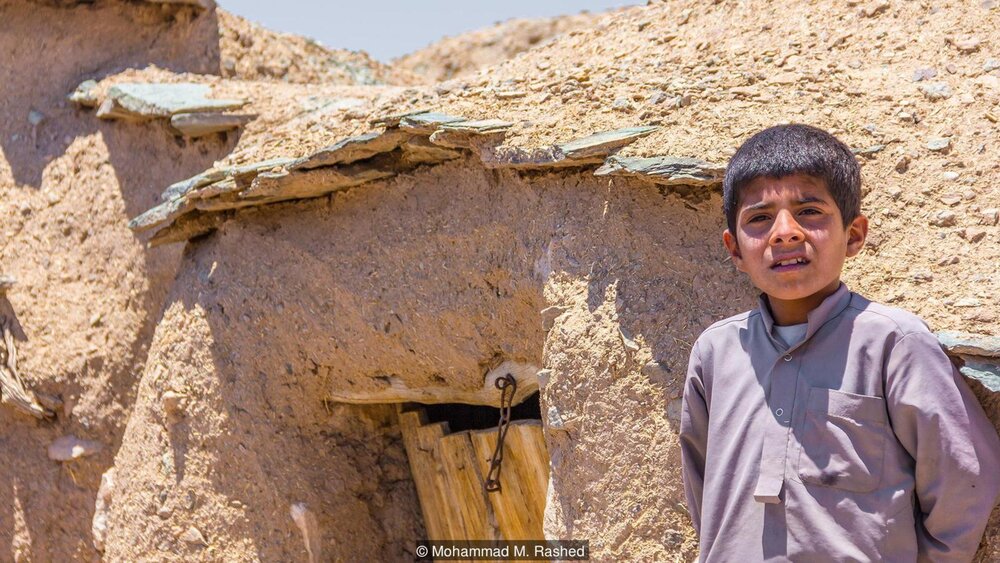Iran’s ‘Lilliput’ may be your upcoming travel destination!

TEHRAN – South Khorasan is somewhat known for its ancient windmills, however, tourism authorities of the eastern province are making efforts to put one of its mysterious villages, commonly known as Iran’s ‘Lilliput’, on the tourist map of the region.
The village is named Makhunik and it is situated on an easternmost point of the Iranian soil, near the border with Afghanistan. It was inhabited by people of very short stature until about a century ago. Currently, it is home to roughly 200 adobe dwellings many of them are of exceptionally low height.
That’s why it is sometimes referred to as nostalgic ‘Lilliput’, an imaginary country inhabited by people about 15 cm tall as being described in Irish author Jonathan Swift’s “Gulliver's Travels”.
In a recent visit to the village, Mohammad Mohammadi, the governor of Sarbisheh, who was accompanied by several local officials, expressed satisfaction over recent rounds of restoration carried out on the historical texture of the village.
“We should try [our best] to develop capacities of the wonderful villages of Chensht and Makhunik to boost tourism and to attract foreign tourists,” Mohammadi said, CHTN reported on Tuesday.
“Such goal will not be achieved unless [we] provide necessary infrastructure for passengers and create residential spaces in the form of eco-lodges in villages that bear cultural and tourist attractions.”
This year, the third phase of restoration of was completed on Makhunik historical texture with the credit of 700 million rials (about $17,000). Moreover, a comprehensive study on the village came to an end.
Located 143 km away from Birjand, the capital of South Khorasan province, Makhunik’s architecture is dominantly characterized by exceptionally low-height houses with narrow doorways most of which cannot be entered without stooping down.
The adobe village used to suffer from an isolation and barren terrain which made architecture and animal breeding challenging carriers.
Searching the reason behind, some put the blame on malnutrition and poor diet including potable water laced with mercury, adding the isolation spurred family marriages that ultimately caused defective genes which probably led to dwarfism.
In 2005, Makhunik appeared in the news as a mummified body measuring 25cm in length was unearthed. It widely fostered a belief that this remote region was once home to ancient dwarfs. Subsequent studies, however, concluded that the mummy was actually a premature baby who died some 400 years ago.
Nowadays, people of Makhunik are of average height as life standards improved in the region from the mid-20th century when construction of roads and growing numbers of vehicles have lessened their isolation.
Many experts say that the unique architecture of the village and its historical background are still an untapped potential for tourism.
Reverting to the vertical-axis windmills, which are locally known as Asbads, it’s noteworthy to mention that Iran eyes to have them registered on the UNESCO World Heritage list. Clusters of these mills can be found in Sistan-Baluchestan, South Khorasan and Khorasan Razavi provinces.

Foreign travelers visit well-preserved windmills in Nashtifan, northeastern Iran.
“Asbad is a smart technique to grind grains, a technique which goes back to ancient times when the people living in the eastern parts of Iran, in an attempt to adapt themselves with the nature and transform environmental obstacles into opportunities, managed to invent it,” according to UNESCO’s website.
“The earliest-known references to windmills are to a Persian millwright in 644 CE and to windmills in Seistan [Sistan], Iran, in 915 CE,” the Encyclopedia Britannica says.
Currently, they are on the itinerary of avid travelers and researchers to the region, who want to feel such subtle yet simple mechanism in person as several windmills have been restored and brought back to life.
AFM/MG
Leave a Comment